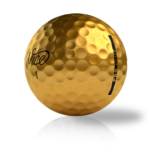A golf ball weighs 1.62 ounces or 45.93 grams. This weight is regulated by the USGA and R&A.
Golf is a sport with precise standards, and the weight of a golf ball is no exception. The United States Golf Association (USGA) and the R&A set the official weight limit to ensure consistency in play. A standard golf ball weighs 1.
62 ounces or 45. 93 grams. This weight allows for optimal performance and control during a game. Whether you are a professional or an amateur, the weight of the golf ball can impact your game. Understanding this can help you make better equipment choices and improve your performance on the course.

Credit: www.golf-madness.com
Golf Ball Basics
Understanding the basics of a golf ball is essential for any golfer. A golf ball’s weight can impact your game significantly. Knowing the standard specifications and historical background helps in choosing the right ball.
Standard Specifications
According to the United States Golf Association (USGA), a golf ball must weigh no more than 1.620 ounces (45.93 grams). This standard ensures fairness and consistency in the game.
| Specification | Value |
|---|---|
| Maximum Weight | 1.620 ounces (45.93 grams) |
| Minimum Diameter | 1.680 inches (42.67 mm) |
These standards ensure that all golf balls perform similarly, giving every player an equal chance.
Historical Background
Golf balls have evolved over time. Early golf balls were made of wood. By the 17th century, the feathery ball became popular. It was made of leather and stuffed with feathers.
- 19th century: Gutty balls made from gutta-percha introduced.
- 20th century: Rubber-core balls became the norm.
- Modern era: Multi-layered balls with advanced materials.
The changes in materials and design have improved the performance and durability of golf balls.
Official Weight Standards
Understanding the weight standards for a golf ball is crucial. The weight affects the ball’s performance, distance, and flight. Let’s dive into the official weight standards set by the USGA and the R&A.
Usga Guidelines
The United States Golf Association (USGA) sets strict guidelines. According to the USGA, a golf ball must not exceed 1.620 ounces. This weight ensures fair play and consistency.
| Parameter | Standard |
|---|---|
| Maximum Weight | 1.620 ounces (45.93 grams) |
R&a Regulations
The RA also has similar regulations. They state that a golf ball must weigh no more than 1.620 ounces. This standard aligns with the USGA’s rules.
- Ensures consistency across tournaments
- Promotes fair competition
Both the USGA and R&A regulations ensure golfers use balls of the same weight. This guarantees a level playing field for all participants.
Factors Influencing Weight
The weight of a golf ball is a critical element in its performance. Various factors influence this weight, ensuring each ball meets regulatory standards. Let’s explore these factors in detail.
Material Composition
The materials used in a golf ball significantly impact its weight. Modern golf balls are typically constructed from a combination of synthetic materials, such as urethane and ionomer. These materials are chosen for their durability and performance characteristics.
- Core Material: The core is often made of rubber or synthetic polymers. It forms the central part of the ball and greatly affects its weight.
- Cover Material: The outer layer or cover can be made from materials like urethane or Surlyn. This layer influences the ball’s weight and feel.
- Layer Count: Multi-layer balls have additional layers, each adding to the overall weight. These layers are designed to enhance performance.
Manufacturing Processes
The manufacturing process also plays a crucial role in determining the weight of a golf ball. Various steps in production ensure that each ball meets the required standards.
- Molding: The core and layers are molded under high pressure. This step ensures uniform weight distribution.
- Compression: Balls are compressed to achieve the desired density. Proper compression ensures consistent weight.
- Quality Control: Each ball undergoes rigorous testing. This process ensures every ball meets the weight regulations set by governing bodies.
Understanding these factors helps in appreciating the precision involved in crafting a golf ball. Each element, from material composition to manufacturing, ensures the ball performs optimally on the course.
Impact On Performance
Understanding the weight of a golf ball is crucial. It significantly impacts your game. The weight of a golf ball affects various performance factors. Here, we will explore its influence on distance, control, spin, and stability.
Distance And Control
The standard golf ball weighs about 45.93 grams. A heavier ball might travel shorter distances. It can provide better control, though. This trade-off is essential for players. They need to balance distance with control.
Lighter balls might achieve longer distances. They can be harder to control. Choose the right ball weight for your game style.
Spin And Stability
Spin plays a crucial role in your game. A heavier ball can produce more spin. This can enhance stability in windy conditions. Spin affects how the ball behaves on landing. You can achieve better accuracy with higher spin rates.
Lighter balls tend to have less spin. They might be less stable in the air. This can affect your shots’ consistency.
Here’s a quick comparison for clarity:
| Weight | Distance | Control | Spin | Stability |
|---|---|---|---|---|
| Heavier | Shorter | Better | More | Higher |
| Lighter | Longer | Harder | Less | Lower |
Choose wisely to improve your game. The right ball weight can make a difference.
Comparing Different Brands
Golfers often wonder about the weight of their golf balls. Different brands may have slight variations. Understanding these differences can impact your game. Let’s explore the weight differences among popular golf ball brands.
Popular Models
Different brands offer various models. Each model has unique features. Here are some popular golf ball models:
- Titleist Pro V1
- Callaway Chrome Soft
- Bridgestone Tour B XS
- TaylorMade TP5
These models are favored by many golfers. They are known for performance and quality.
Weight Variations
Golf ball weights can vary slightly. The USGA rules state a golf ball must not weigh more than 1.620 ounces (45.93 grams). Let’s look at the weights of some popular models.
| Brand | Model | Weight (ounces) | Weight (grams) |
|---|---|---|---|
| Titleist | Pro V1 | 1.62 | 45.93 |
| Callaway | Chrome Soft | 1.60 | 45.36 |
| Bridgestone | Tour B XS | 1.61 | 45.60 |
| TaylorMade | TP5 | 1.62 | 45.93 |
As seen, most brands stick close to the maximum weight. This ensures optimal performance and compliance with rules.
Myth Busting
Many golfers have questions about the weight of a golf ball. There are various myths surrounding this topic. Let’s debunk them with clear facts and scientific explanations. Understanding the true weight can improve your game.
Common Misconceptions
Several myths exist about the weight of a golf ball. Below are the most common ones:
- Golf balls vary greatly in weight.
- Heavier golf balls travel farther.
- Lighter golf balls are easier to control.
These myths can confuse golfers. Let’s clarify them with science.
Scientific Clarifications
The USGA and RA set strict rules for golf ball weight. A standard golf ball must not weigh more than 1.620 ounces (45.93 grams). This rule ensures fairness in the game.
| Measurement | Value |
|---|---|
| Maximum Weight | 1.620 ounces (45.93 grams) |
All approved golf balls meet this standard. This means there is no significant weight difference between brands.
Heavier golf balls do not necessarily travel farther. Ball flight depends on many factors, including swing speed and weather conditions.
Lighter golf balls are not easier to control. Control depends more on the golfer’s skill and the ball’s design.
Knowing these facts can help you choose the right golf ball. Always check the ball’s specifications. This ensures you play within the rules and get the best performance.
Choosing The Right Ball
Finding the right golf ball can improve your game. The weight of a golf ball is regulated. It cannot weigh more than 1.62 ounces. But there’s more to consider than just weight.
Skill Level Considerations
Beginners need balls that are easy to control. These balls should have a soft feel. They can help in achieving better accuracy.
Intermediate players should look for balls that offer a balance of control and distance. These balls help in refining skills.
Advanced players often prefer balls that provide greater spin and control. These balls can enhance performance on the greens.
Playing Conditions
Weather conditions can affect your choice of golf ball. In cold weather, a softer ball performs better. In hot weather, a harder ball may be more suitable.
Course conditions also play a role. On a wet course, a ball with higher spin can help. On a dry course, a ball with less spin might be better.
| Condition | Recommended Ball |
|---|---|
| Cold Weather | Softer Ball |
| Hot Weather | Harder Ball |
| Wet Course | High Spin Ball |
| Dry Course | Low Spin Ball |
Terrain is another factor. If the course has many hazards, a more durable ball is advisable. On open terrain, a ball with better flight characteristics can be beneficial.
Choosing the right ball depends on many factors. Consider your skill level and playing conditions. This will help you select the best ball for your game.
Future Trends
The future of golf ball design is exciting. Innovations promise to change the game. Two key areas to watch are innovative materials and regulatory changes.
Innovative Materials
Manufacturers are exploring new materials. These materials could make balls lighter and more durable. For example, some companies are using nanotechnology. This tech can create stronger, lighter golf balls.
Another trend is the use of biodegradable materials. These materials help the environment. Imagine a golf ball that decomposes naturally. This would be a big win for eco-friendly golf courses.
Here is a table showing some innovative materials:
| Material | Benefits |
|---|---|
| Nanomaterials | Strong and lightweight |
| Biodegradable polymers | Environmentally friendly |
| Composite materials | Enhanced performance |
Regulatory Changes
Golf ball regulations may change soon. The USGA and RA set the rules for golf balls. They ensure balls meet weight and size standards.
Possible changes include stricter weight limits. This could impact ball design. Manufacturers might need to rethink their products.
Here are some potential regulatory changes:
- Lower maximum weight
- New size restrictions
- Material composition rules
These changes aim to maintain fairness in the sport. They ensure no player has an unfair advantage.

Credit: www.tutelman.com
Frequently Asked Questions
How Many Golf Balls Equal A Pound?
Approximately 8 to 10 golf balls equal one pound. The exact number depends on the ball’s brand and material.
How Much Does 12 Golf Balls Weigh?
Twelve golf balls typically weigh around 1. 2 pounds or 544 grams. Each standard golf ball weighs about 45 grams.
Is A Golf Ball Or Table Tennis Ball Heavier?
A golf ball is heavier than a table tennis ball. Golf balls weigh around 45 grams, while table tennis balls weigh about 2. 7 grams.
How Many Balls Does A Golfer Carry?
A golfer typically carries 6-12 balls in their bag. The exact number depends on personal preference and the course.
Conclusion
Understanding the weight of a golf ball is crucial for every golfer. It ensures optimal performance and adherence to regulations. Knowing this detail can improve your game and strategy on the course. Always check the weight to maintain consistency and enjoy your golfing experience to the fullest.





